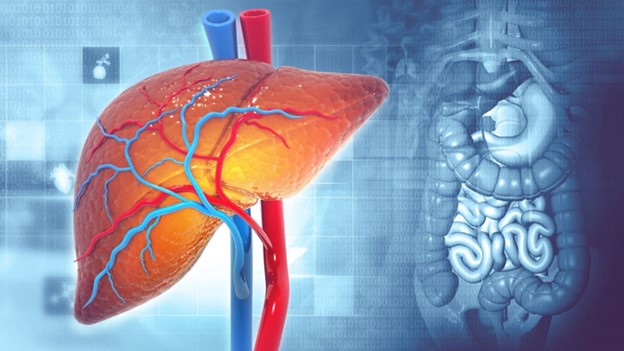Many wonder, “How do external factors, particularly toxins, influence our body’s internal processes?” The liver, one of our body’s most vital organs, plays a crucial role in detoxifying harmful substances and regulating various metabolic functions. One of its indispensable roles involves cholesterol synthesis, a process that is necessary for cellular functions and overall bodily health.
The National Institute of Health estimates that 25-33% of global disease is attributed to environmental risk factors, which include dietary and endogenous toxins. It becomes essential for us to understand how toxins interfere with cholesterol synthesis in the liver and what it means for our well-being. While this is complex, pharmaceutical interventions, like the Crestor 5 mg Tablet, have been developed to address cholesterol-related issues effectively.
Cholesterol Synthesis
What is cholesterol?
In all of the cells of your body, there is a waxy (fat-like molecule) known as cholesterol. To produce hormones, vitamin D, and chemicals that aid in food digestion, your body requires cholesterol. The human body makes all the cholesterol it needs.
Where does cholesterol synthesis occur in the human body? For sure, it is the liver. It acts as the central hub, producing and releasing cholesterol into the bloodstream. Based on the body’s needs, the liver smartly regulates the amount of cholesterol secreted. For instance, if dietary cholesterol intake is high, the liver adjusts by making less. About 75% of the cholesterol in our body is synthesized internally, while only 25% comes from dietary sources.
What’s the process of cholesterol creation? Let’s understand:
Enzymatic Reaction
Cholesterol synthesis begins with a series of enzymatic reactions. Simplified, it starts with a molecule called acetyl-CoA and, through a series of steps, transforms into the cholesterol we know.
Hydroxymethylglutaryl-CoA (HMG-CoA) Reductase is an enzyme that synthesizes cholesterol and other isoprenoids. The mevalonate pathway, a crucial step in the production of cholesterol and critical non-sterol isoprenoids, is created by HMG-CoA reductase.
What Exactly Toxins Are?
The term “toxins” describes toxic compounds that are created by living cells or creatures. When introduced in modest amounts, they can be harmful to other humans. Toxins come from many different places and are categorized according to where they came from or how they were made. Here are the types of toxins:
Environmental Toxins: These are harmful agents found in our surroundings. Examples include pesticides, pollutants in the air and water, and certain industrial chemicals.
Dietary Toxins: These come from what we consume (food we eat). Examples are certain food additives, excessive alcohol, or substances in improperly stored or cooked foods.
Endogenous Toxins: These toxins originate inside our body. They can be metabolic by-products or other substances that, in excess, become harmful. For instance, a by-product of the synthesis of cholesterol might turn toxic if not properly managed.
There are 3 routes of toxin exposure. They are:
– Ingestion (consuming contaminated food or drink)
– Inhalation (inhaling polluted air)
– Skin Contact (Absorption of toxins through the skin. For example, using skincare products containing harmful toxins.)
Toxins that Impact the Liver Directly
Our liver filters out harmful substances from our body. However, certain toxins can pose significant challenges. That affects the liver’s function in the synthesis of cholesterol. Let’s explore some of these toxins impacts on the Liver:
Heavy Metals
Heavy metals like lead, mercury, and arsenic can destroy liver enzymes responsible for the synthesis of cholesterol, potentially disrupting the balance of cholesterol in the body. The common sources include:
– Old paint (lead)
– Certain fish (mercury)
– Contaminated groundwater (arsenic)
Industrial Chemicals & Solvents
Chemicals like Carbon Tetrachloride and Vinyl Chloride induce oxidative stress. It causes damage to liver cells. This further interrupts cholesterol synthesis and overall lipid metabolism.
For example, Workers in industries like PVC manufacturing (vinyl chloride exposure) or those using cleaning solvents (carbon tetrachloride) need to be particularly cautious.
Alcohol and its Metabolites
Alcohol can affect cholesterol production, possibly raising its levels. Excessive alcohol consumption leads to liver inflammation and damage. High levels of cholesterol for too long due to alcohol increase the risk of conditions like fatty liver disease.
According to the NIH, or National Institutes of Health, more than 90% of heavy drinkers who take 4 to 5 standard drinks daily develop fatty liver disease (i.e., steatosis). It highlights the direct link between alcohol consumption & liver health.
Consequences of Altered Cholesterol Synthesis
Cholesterol is important for our health. If something, like toxins, changes how cholesterol is made, it can have big effects. So, what happens when this process goes wrong?
Atherosclerosis
As a result of atherosclerosis, the arteries thicken or become harder. Plaque deposits form the inside lining of the arteries. As it builds up in the arteries, it stiffens and thickens the arterial walls. The plaque is composed of fatty materials, cholesterol, waste products produced by cells, calcium, and fibrin.
Liver Diseases
From fatty liver (where excess lipids accumulate) to liver cirrhosis (marked by tissue scarring) and even liver cancer, the stakes are high when cholesterol synthesis is disturbed. The prevalence of toxin-induced fatty liver disease has seen a spike of 25% over the past decade, emphasizing the crucial role of balanced cholesterol synthesis as per NIH.
What Are the Prevention and Management Methods?
It’s time to learn how to avoid and handle these problems. It’s better to prevent than fix issues. So, how can we avoid these bad substances and keep our cholesterol in check?
Reducing Toxin Exposure
Vigilance is Key: Whether it’s the environment we live in or the food we consume, being aware and cautious reduces the risk. From choosing organic foods to using air purifiers, every bit counts.
Detoxification: People talk a lot about ‘detox,’ but not all detox methods work the same way. Choose methods that are supported by science, like drinking water and eating foods that help with detox, such as greens and citrus fruits.
Dietary & Lifestyle Interventions
Eat Right: Foods like walnuts and fatty fish that are rich in omega-3 fatty acids support liver function and balance the levels of cholesterol. Similarly, incorporating foods rich in antioxidants, such as berries and green tea, can fend off the damaging effects of toxins.
The Power of Plants: Plants have natural compounds called phytonutrients that are good for the liver. Foods like turmeric and beetroot are especially good for liver health because of these compounds.
Regular Health Screenings: Regular liver function tests and cholesterol checks act as an early warning system, catching any imbalances before they escalate. With early detection, personalized strategies, from dietary changes to medications, can be tailored to ensure optimal health.
Buy Crestor tablets from the best Canadian online pharmacy to control your cholesterol levels efficiently.
Conclusion
A thorough study of this issue highlights the irrefutable connection between toxins and their detrimental effects on the liver’s ability to cholesterol synthesis. Understanding the complex relationship between toxicity exposures and cholesterol production is crucial for liver function but is also important for cardiovascular health.
Understanding and proactively reducing these exposures in an age where environmental and dietary toxins are pervasive becomes more than just a suggestion—it’s essential for overall health.
Read Also
- Ketamine-Assisted Therapies: Impacts on Employee WellbeingWorkplace stress is common today. Many employees feel tired, anxious, or burned out. Regular therapy can help, but some people need more support. Ketamine-assisted therapy is showing good results for mental health. A ketamine-assisted therapist guides each session safely. This therapy can improve mood, focus, and energy. Learning more about it can help teams stay… Read more: Ketamine-Assisted Therapies: Impacts on Employee Wellbeing
- The Future of Men’s Health: Why Telehealth Is Here to StayTelehealth isn’t just a pandemic trend that faded into the background. For Australian men, it has become one of the most practical, time-saving, and stress-free ways to manage everyday health — and it’s shaping the future of how we access care. Platforms like DOCTO, an Australian online doctor and specialist telehealth service, are leading the… Read more: The Future of Men’s Health: Why Telehealth Is Here to Stay
- How to Build a Simple, Clean Skincare Routine ?You don’t need a complicated skincare routine. It doesn’t have to be something that requires twenty different products and confusing steps. Your routine works well with just a few high-quality clean ingredients. The beauty industry keeps pushing more products, but your skin actually needs less. You only need a simple approach to get better results… Read more: How to Build a Simple, Clean Skincare Routine ?
- How Preventive Dental Care Supports Overall HealthHave you ever wondered how a simple dental checkup could impact your entire body? Oral health is more than just a bright smile. Studies show that poor dental habits can contribute to serious health problems. Gum disease and tooth decay are linked to heart disease, diabetes, and infections. Yet, many people overlook preventive dental care.… Read more: How Preventive Dental Care Supports Overall Health
- Seeing Clearly in a High-Tech World: A Deep Dive into Advanced Vision Care ServicesProtecting your eyesight isn’t optional—it’s essential. Modern eye care has evolved far beyond basic exams, offering advanced diagnostics, personalized treatments, and surgical innovations that keep vision sharp for life. A leading example is Intermountain Eye Center, home to specialists like Dr Fishburn Boise, where patients receive comprehensive, high-level vision care designed to preserve long-term eye… Read more: Seeing Clearly in a High-Tech World: A Deep Dive into Advanced Vision Care Services






